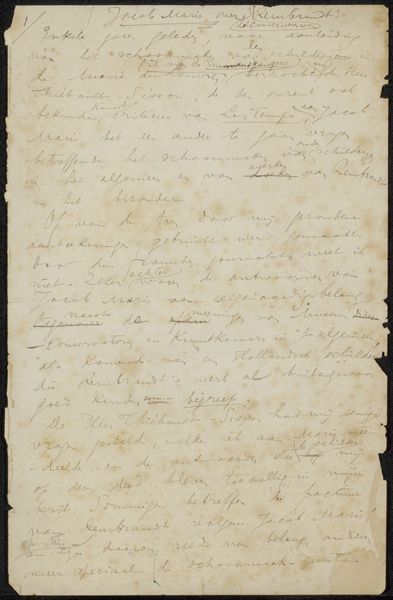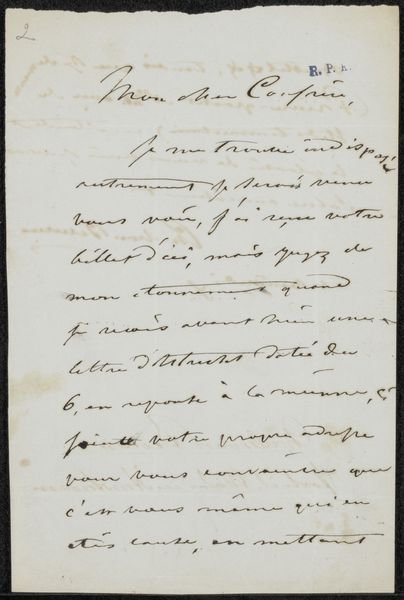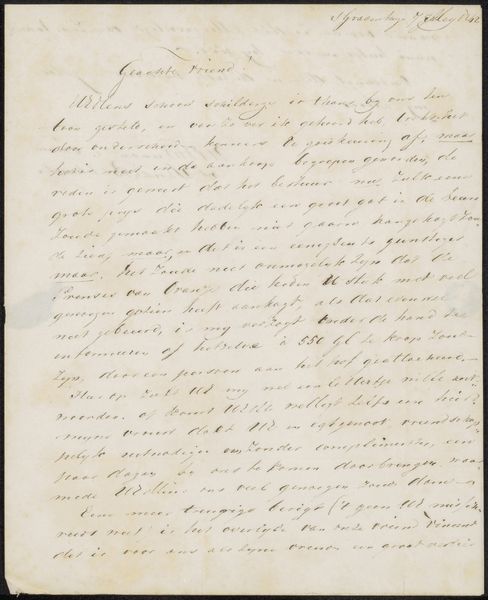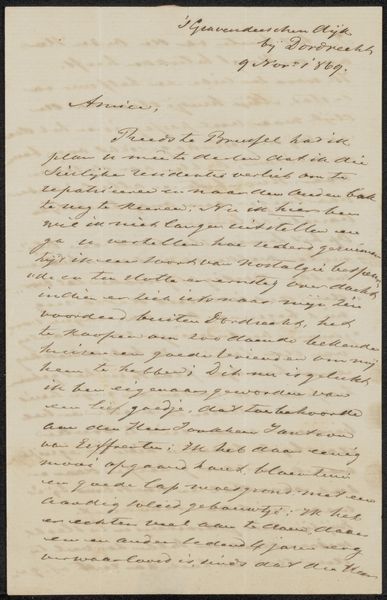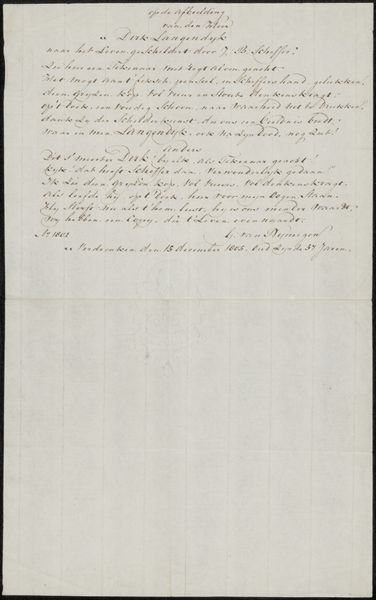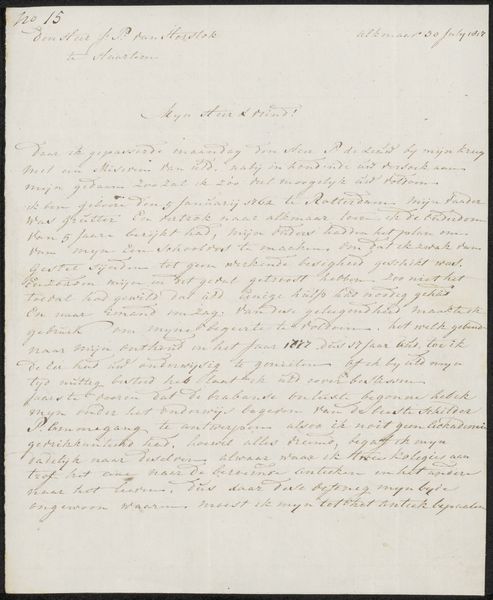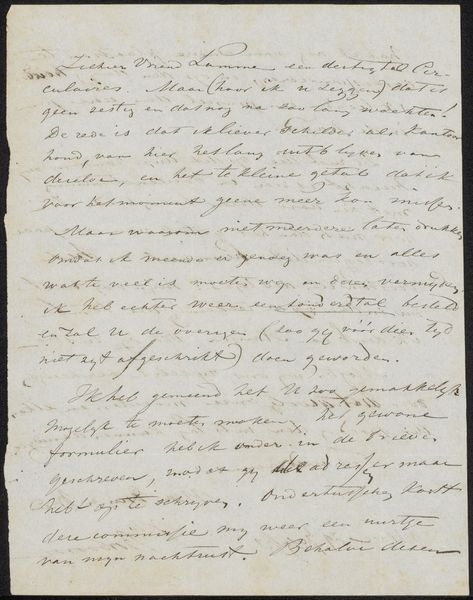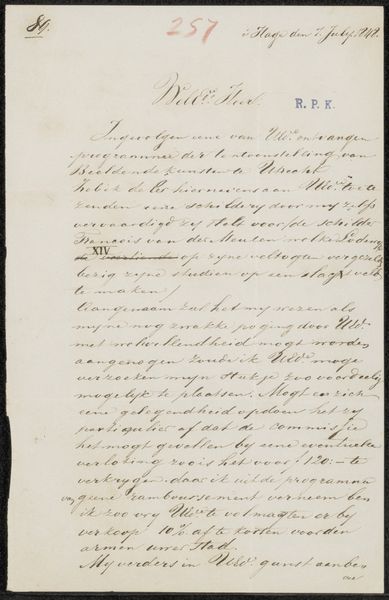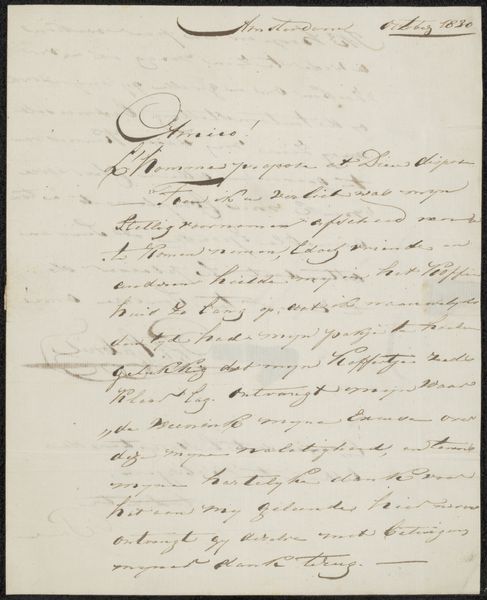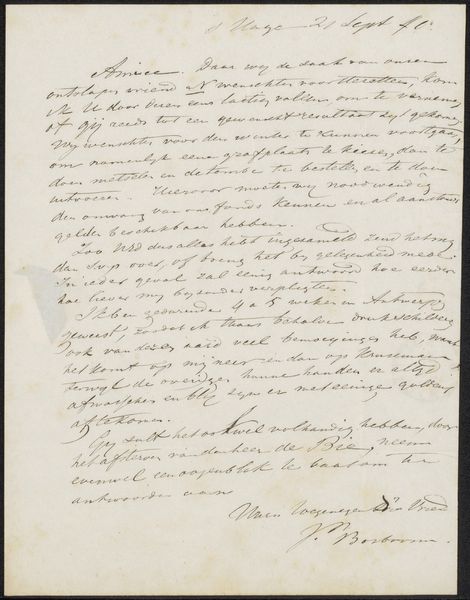
Blad, der gengiver et formentligt titelblads tekst. 1660 - 1663
0:00
0:00
drawing, textile, paper, ink
#
drawing
#
baroque
#
textile
#
paper
#
ink
Dimensions: 208 mm (height) x 159 mm (width) (bladmaal)
This handwritten page was created in 1662 by Karel van Mander III. It’s an intriguing object because it speaks to the relationship between art, science, and the printing press at that time. The text describes illustrations of the human body, specifically those intended for anatomical study. You see, Mander mentions that the images were first rendered in color, then engraved in copper by Albert Haelwegh. The mention of engraving is key. It refers to the technique of incising lines into a metal plate, inking it, and then using a press to transfer the image onto paper, which allowed for the wide distribution of texts and images. Here we see Mander’s notes on that collaborative process. The original drawings are lost, but this page gives us some insight into the way that scientific knowledge was made public at the time, through a combination of artistic skill, technical expertise, and printing. The labor of each person becomes a vital part of the final print, and the circulation of knowledge.
Comments
No comments
Be the first to comment and join the conversation on the ultimate creative platform.

